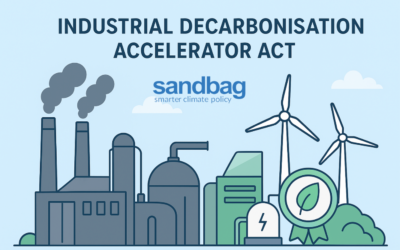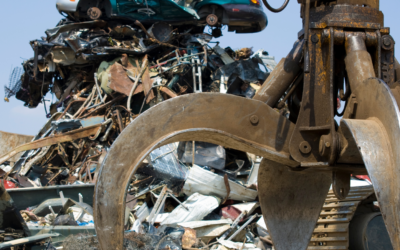The European Hydrogen Bank Confirms a Blind Support Approach
The Commission has recently published the Terms & Conditions (T&C) for the pilot auction of the European Hydrogen Bank (EHB) taking place on the 23rd of November 2023, in an attempt to meet the ambitious target set in the REPowerEU plan of 10Mt domestically produced green hydrogen. As previously announced, the Commission has decided to extend the recently designed competitive auction scheme under the Innovation Fund in an initial €800 million tender from the funding mechanism. The EHB will provide subsidies of up to €4.50/kg for up to 10 years for each kilogram of renewable hydrogen produced according to the criteria set out by the two delegated acts on Renewable Fuels of Non-Biological Origins (RFNBOs).
Project developers are invited to participate in reverse auctions where they would bid for a fixed premium (a set amount of subsidies) awarded per kilogram of renewable hydrogen they produce to “de-risking projects and leveraging private capital into them”. The T&C outlines various aspects of the auction process, including the auction design, qualifications requirements for project developers to participate in the bidding process, whether the fixed premium can be combined with other forms of financial support, and the responsibilities of producers who are awarded the fixed premium. These rules are a first step in establishing a governance framework for the EU hydrogen market and reflect the aspirations of decision-makers regarding the potential contribution of hydrogen to the overall decarbonisation objectives.
In May, Sandbag participated in a workshop organised by the Commission to evaluate the draft version of the terms and conditions for the hydrogen bank pilot auction. During the stakeholder consultation, we expressed the following concerns about some of the proposed rules that would govern the auction:
- The cumulation of the fixed premium with free allowances under the EU ETS;
- The absence of clawback mechanisms to prevent windfall profits;
- The absence of restrictions on off-takers of subsidised H2.
Unfortunately, the Commission is pushing ahead with a lax hydrogen bank pilot auction that prioritises attracting a large number of bidders rather than ensuring the cost-effective functioning of the EHB. The loose rules and high risks of overcompensation in the upcoming auction will not only turn it into a cash cow for project developers but will also lead to a wasteful allocation of public funds. It is unfortunate to see the Commission’s unwavering determination to make the EHB spend without counting, turning a blind eye to the limited applicability of H2 where other decarbonisation options would be more effective.
Free Allocation
From 2026, hydrogen production will receive free allowances under the EU ETS. If the legislation enters into force in its current form, both free allowances and EHB subsidies will be proportional to the volumes of H2 produced. However, the Commission is opposed to exempting H2 producers that receive a fixed premium from receiving these free allowances.
This cumulation is made possible while other abatement technologies do not receive any support. This stacking of support schemes would 1) disrupt price discovery, 2) fail to de-risk and 3) risk channelling hydrogen to applications with more viable alternatives.
- Disrupt price discovery: ignoring the support provided by free allocation may result in bid prices that do not fully reflect the true cost of the technology relative to others;
- Fail to de-risk: Cumulating free allocation with fixed premiums does not meet the Commission’s objectives of de-risking investment in hydrogen, as hydrogen plant revenues would be partially dependent on fluctuating EUA prices as a source of revenue. This may lead to project developers requiring higher premiums for this risk, mobilising more public funding than necessary;
- Put hydrogen in the wrong applications: Excessive subsidies for green hydrogen through cumulative support schemes may discourage more effective forms of abatement, such as circular activities, even in those hard-to-electrify sectors where hydrogen would play a key role in decarbonisation. In the iron and steel sector, for example, the circular practice of using ferrous scrap receives no free allowances. Distributing free allowances to project developers who are awarded a fixed premium may over-subsidise hydrogen to the point where it may make ore transformation more competitive than scrap use.
Cumulated subsidies
Overall, avoiding cumulation of aid is a crucial step to ensure that competitive tendering is cost-effective, as cumulated aid could encourage Member States to engage in a subsidy race, at the expense of the competitiveness of projects and taxpayers. The cumulation of aid in hydrogen production is likely to occur at many levels:
- Subsidised electricity;
- State aid compensation for indirect carbon costs;
- The priorities of the Net Zero Industrial Act aimed at supporting actors in the hydrogen supply chain.
In order to ensure an efficient competitive bidding process, it is crucial to take into account all forms of support, which the published T&Cs fail to do. By allowing multiple subsidies to support hydrogen production, the EHB will artificially reduce the competitiveness of more viable low-carbon activities.
No claw-back mechanism
In the final version of the T&Cs, the Commission has decided not to introduce a clawback mechanism, which is usually triggered to prevent overcompensation of project developers for which subsidies would be partly responsible. In principle, higher profit margins in an emerging market are justified by higher risk, but in some cases, profits may be due to market failures rather than risk. For such cases, a claw-back mechanism should be set up to recover excess profits.
For example, a project developer with a high price offtake agreement, with knowledge of lower offtake prices contracted by other bidders, could expect extra profit while underbidding their peers. Asymmetrical information on the market accessibility of some technologies might also allow for extra profit at no extra risk. This is particularly important as early auctions are a testing ground and may not accurately reflect the true value of hydrogen in a mature market.
Thus, bidders having benefitted from market failures are likely to benefit more than later bidders in subsequent auctions towards the lower end of their contract term as a hydrogen market develops and moves towards liquidity.
Finally, if demand for renewable hydrogen increases as the deadline for meeting sectoral H2 quotas approaches, off-takers may be eager to agree to higher off-take prices in order to meet their fuel consumption targets. Project developers who received higher fixed premiums in asymmetric conditions may thus make extra profits with the help of subsidies. A claw-back mechanism is therefore essential to prevent hydrogen producers from taking advantage of sudden surges in demand for H2 and to protect off-takers from incurring additional costs for their decarbonisation efforts.
No off-taker restrictions
For the hydrogen bank pilot auction, the Commission has chosen to allow indiscriminate access to subsidised hydrogen production, potentially leading to wasteful use in sectors where other decarbonisation options, such as direct electrification or recycling, are more appropriate. Project developers receiving fixed premiums should be prevented from selling hydrogen for wasteful applications, namely
- Heating;
- Flexible power generation (i.e. gas-fired powerplant retrofittable or blendable with hydrogen);
- Road transport.
Such restrictions would ensure that subsidised renewable hydrogen is directed to sectors facing significant decarbonisation challenges, thereby increasing the abatement efficiency of public funding. The restriction would better align the support scheme with the renewable hydrogen targets set out in recent legislation (Renewable Energy Directive, FuelEU Maritime, and ReFuelEU Aviation), which require increasing shares in total fuel consumption, and is a necessary step to not let public money go to waste.
Photo by Christian Wiediger on Unsplash
Read More:
New Principles for Steel Labelling: response to the consultation on the Industrial Decarbonisation Accelerator Act
Sandbag’s response to the EU’s Industrial Decarbonisation Accelerator Act sets out four principles to guide green steel labelling schemes, promoting credible standards based on lifecycle emissions and system-wide decarbonisation.
Steel emissions standards under threat from flawed “mass balance” proposal
A joint letter from 30+ NGOs warns that coal-based steel could be falsely labelled as green under proposed “mass balance” rules. The signatories call for traceable, credible emissions data in steel standards.
Joint statement urges EU to boost the use of recycled steel scrap in the automotive sector
A new joint statement urges the EU to set binding targets for recycled steel use in cars, citing the climate benefits of secondary steel and the need to reduce demand for high-emission imports.



